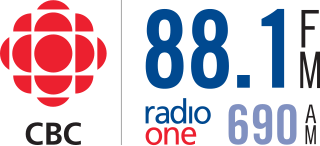Programming

While most programming was produced locally, increasingly there was a trend towards centralization and producing content with a national scope. Programming consisted largely of live music, drama, educational broadcasts, children's programming and simulcasts of American programming. [5] Canada's first regular radio drama was CNRV Players produced at CNR Vancouver station CNRV by the CNR Drama Department from 1927 to 1932. [3]
One of the network's most notable broadcasts was its transmission of the celebrations of the Diamond Jubilee of Canadian confederation from Parliament Hill in Ottawa on July 1, 1927. The three-part broadcast, consisting of speeches, songs, poems and the peals of the carillion bells of the Canadian Parliament Buildings' Victory Tower, was CNR Radio's, and Canada's, first live coast-to-coast broadcast and was heard by an estimated audience of 5 million people listening to 23 stations in Canada, which received the broadcast via telephone and telegraph wires. The broadcast was also carried on NBC Radio in the United States and a shortwave relay was used to transmit the programme to the British Broadcasting Corporation which rebroadcast it throughout the United Kingdom and Europe. [10] [11]
Public service broadcasts such as news bulletins, weather reports, and local announcements were included. [12] CNR Radio also produced, as a public service, educational programmes such as An Introduction to the Gilbert and Sullivan Operas, which was a series of lectures and performances for adults, and for children Radio Train in which an imaginary train travelled to a different location in each episode, with information about the sights and history of each locale. "In addition, the travelers would also encounter some mysterious problem that could only be solved at the end of the episode by the recall of facts and events that had been described." [5] In 1927, CNRV in Vancouver aired a series of music lessons prepared by the Vancouver School Board. [12]
Romance of Canada was a series of radio plays written by Merrill Denison and produced at CNR's Montreal studios. Renowned BBC radio playwright Tyrone Guthrie was director of the first 14 episodes. [3] Broadcast over two seasons in 1931 and 1932, Romance of Canada recalled epic moments in Canadian history. [9] Thornton hoped Romance of Canada would "kindle in Canadians generally a deeper interest in the romantic early history of their country". [9]
What is now Hockey Night In Canada originated on the network in November 1931 as the General Motors Hockey Broadcast [13] [14] and was also known as Saturday Night Hockey featuring games of the Toronto Maple Leafs in Ontario and the Montreal Maroons and Montreal Canadiens in Quebec. [15]
Music programing included Old-Time Fiddlers contests which were broadcast to the full network from Moncton. In 1925, CNRT in Toronto broadcast a complete performance of Yeoman of the Guard as well as performances of classical music. In the same year, CNRM in Montreal broadcast a complete in-studio production of The Mikado and other Gilbert and Sullivan comic operas with a full orchestra and CNR Radio signed a contract with the Hart House String Quartet and in 1927, put them on national tour with broadcasts from each station in celebration of Beethoven's centenary. By the 1930s, the network was airing condensed studio productions of great operas. [12] In 1929, CNR Radio launched North America's first transcontinental concert series, the All-Canada Symphony Concerts featuring the Toronto Symphony Orchestra conducted by Luigi von Kunits for a series of 25 broadcasts. The music performed was composed entirely by Canadian composers. [12] CNRV Vancouver produced several shows celebrating Beethoven's centenary. [16] The network also had its own radio orchestra conducted by Henri Miro in 1930 and 1931. [17]
Other programming included broadcasts in French beginning in 1924 with the opening of CNRM in Montreal; by the 1930s CNR Radio had a French network in operation. [12] Some programs were also produced and broadcast in some Native Canadian languages from 1927 over CNRO Ottawa and CNRW Winnipeg. [16] Regular network distribution of CNR programming to all its stations and affiliates began in 1928. [18]








